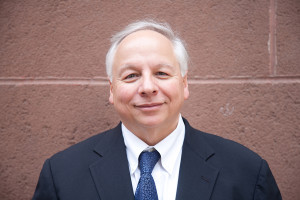This year has seen the culmination of substantial analysis and focused planning related to Boston and the metropolitan region’s future. Three efforts that warrant highlights are Boston Mayor Martin Walsh’s Imagine Boston 2030, the first citywide masterplan in 50 years; Go Boston 2030, the dedicated transportation recommendations that will guide the mobility issues; and A Better City’s report on the State of the Built Environment. Each study offers a similar message that smart planning is urgently needed now to properly prepare for this expected growth, especially as the region prepares for a changing coastline and the impacts of climate change. The future of Boston and the region is exciting as long as we continue to make this area a desirable place to live, work and visit.
Boston’s recent growth is reversing the trends from middle of the 20th century, when the number of city residents actually decreased by 30 percent between 1950 and 1980. Recently, Boston has grown twice as fast as the rest of the nation, due to our diverse economy, world-class hospitals, universities, innovation industry and talented workforce. According to projections in Go Boston 2030, the city expects to see population growth of an additional 100,000 residents between 2010 and 2030, and it is likely Boston will return to its peak population by 2050. Over this same time period, the Dukakis Center for Urban and Regional Policy at Northeastern University projects an increase of 240,000 people to the 16 communities that make up metropolitan Boston. Where these additional people live, work and how they travel requires smart, comprehensive planning, and ultimately increased investment to support our infrastructure, particularly with transportation.
According to Imagine Boston 2030, Boston workers are 30 percent more productive than the national average, which is one reason to believe employers will want to be located in this region. We can expect a 13 percent growth in the number of workers in these metropolitan area communities, and business output increase of 27 percent, which will put a greater strain on our commuter rail and transit system, regional buses and highways. Boston, state government and the private sector will together have responsibility to accommodate the increased number of workers who will be commuting each day and need access to these jobs.
New Ways To Get Around
The city of Boston is setting some specific goals for how Bostonians commute to work to adapt to the growing population and increased workforce. Today, 40 percent of workers drive to work. By 2030, the goal is to see only half that number, but that will require an increase in the number of people walking, biking or taking public transportation to work. Boston understands that these goals can only be realized with improvements to the entire transportation network, where the key elements being increased safety to eliminate roadway fatalities, improved reliability of transit service, expanded access to transit routes, and expanded bike and car share accommodations.
We are fortunate that Mayor Walsh directed the city planning efforts to be aspirational in their ideas, but also that the policy recommendations are not being done in separate bureaucratic silos. After all, our land use policy to support transit-orientated development naturally affects the housing, zoning and transportation needs of a neighborhood. If area residents are going to commute to work on bike or public transit, they will also need a regional transportation system that is not only reliable, but also connects them to the current and emerging job centers in Greater Boston.
2016 was a year of impressive forecasting and planning for the future of the city and region. Hopefully, these efforts work will now become the blueprints for partnership and action plans between the city of Boston, state government and the business community.
Rick Dimino is president and CEO of A Better City.




 |
| 


